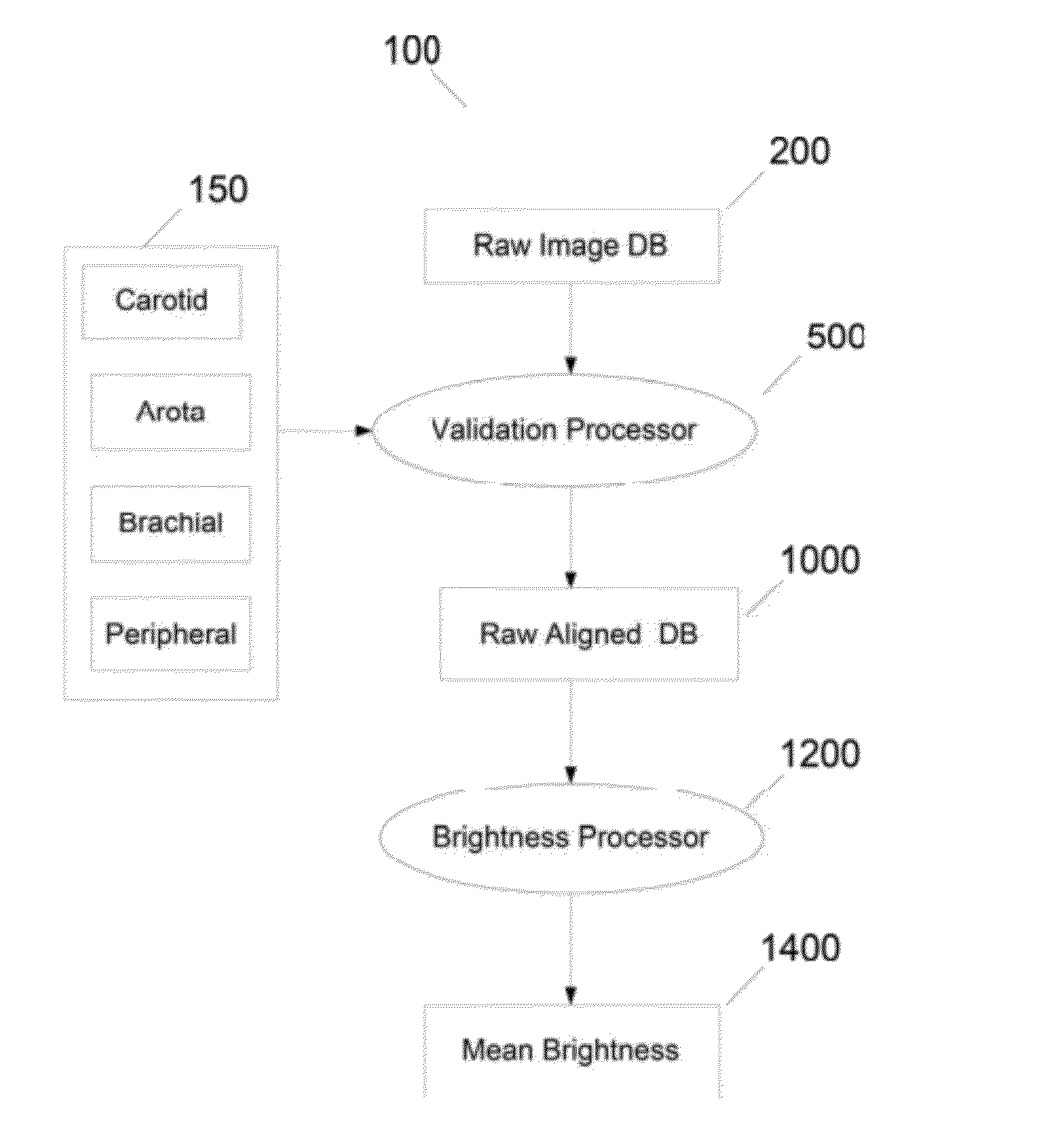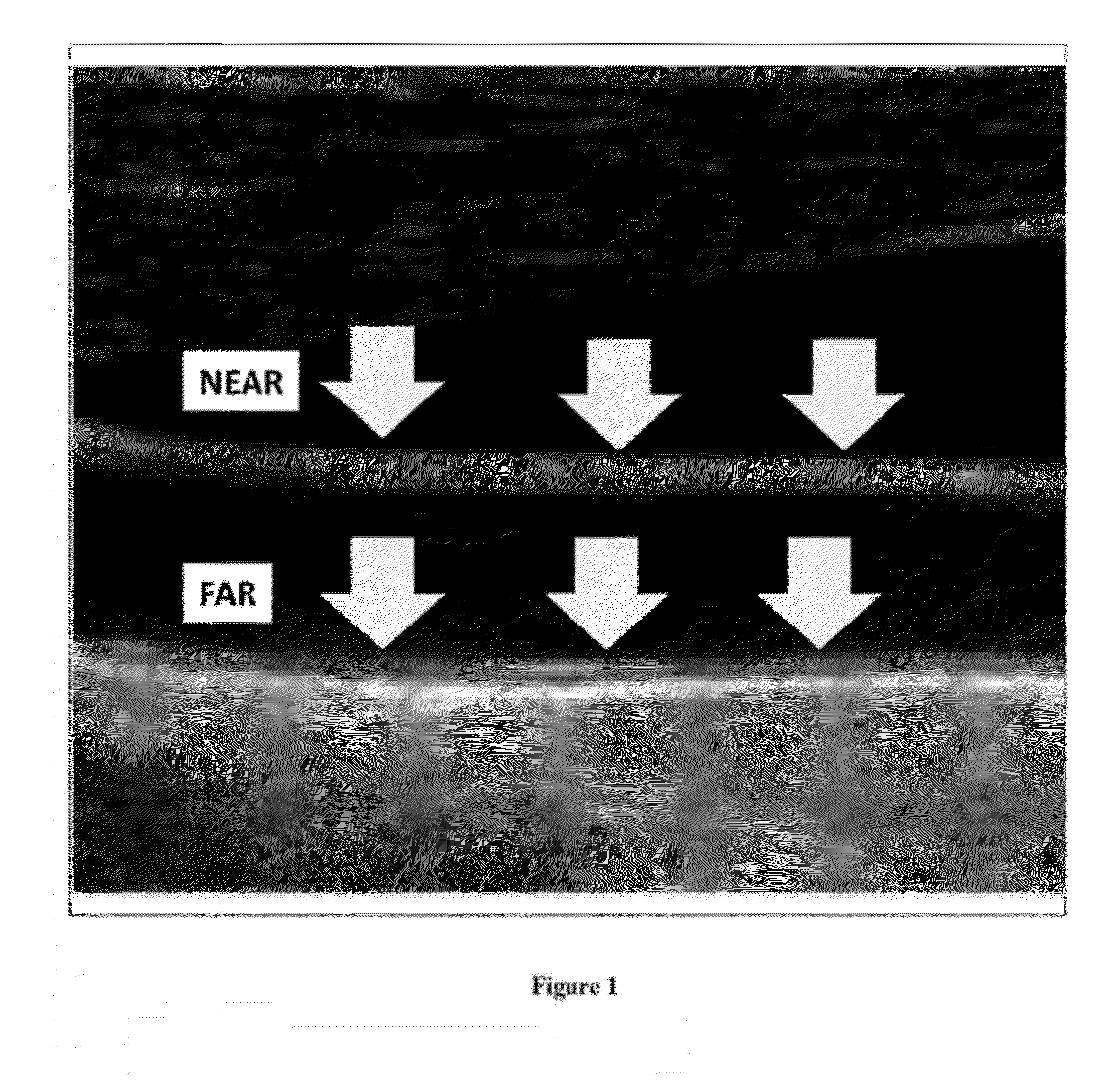Hypothesis Validation of Far Wall Brightness in Arterial Ultrasound
a far wall brightness and ultrasound technology, applied in the field of data processing and imaging system validation, can solve the problems of difficult automated imt methods, and difficult to achieve the effect of accurate and fast detection
- Summary
- Abstract
- Description
- Claims
- Application Information
AI Technical Summary
Benefits of technology
Problems solved by technology
Method used
Image
Examples
Embodiment Construction
[0029]In the following description, for purposes of explanation, numerous specific details are set forth in order to provide a thorough understanding of the various embodiments. It will be evident, however, to one of ordinary skill in the art that the various embodiments may be practiced without these specific details.
[0030]As explained above, an algorithm localized the adventitial wall based on the intensity local maxima of every column in the image, i.e., the far wall brightness compared to the near wall. Several systems developed for IMT measurements that were based on this hypothesis produced good agreement with expert segmentation. The assumption was based on manual intensity measurements on several, representative US images.
[0031]Thus, the assumption that the far wall brightness is the highest intensity in the image can be used as a basis for automatically finding the far adventitia borders and then automatically using that as a marker for IMT measurement. This application is ...
PUM
 Login to View More
Login to View More Abstract
Description
Claims
Application Information
 Login to View More
Login to View More - R&D
- Intellectual Property
- Life Sciences
- Materials
- Tech Scout
- Unparalleled Data Quality
- Higher Quality Content
- 60% Fewer Hallucinations
Browse by: Latest US Patents, China's latest patents, Technical Efficacy Thesaurus, Application Domain, Technology Topic, Popular Technical Reports.
© 2025 PatSnap. All rights reserved.Legal|Privacy policy|Modern Slavery Act Transparency Statement|Sitemap|About US| Contact US: help@patsnap.com



